Everything You Need To Know About Fish Lights
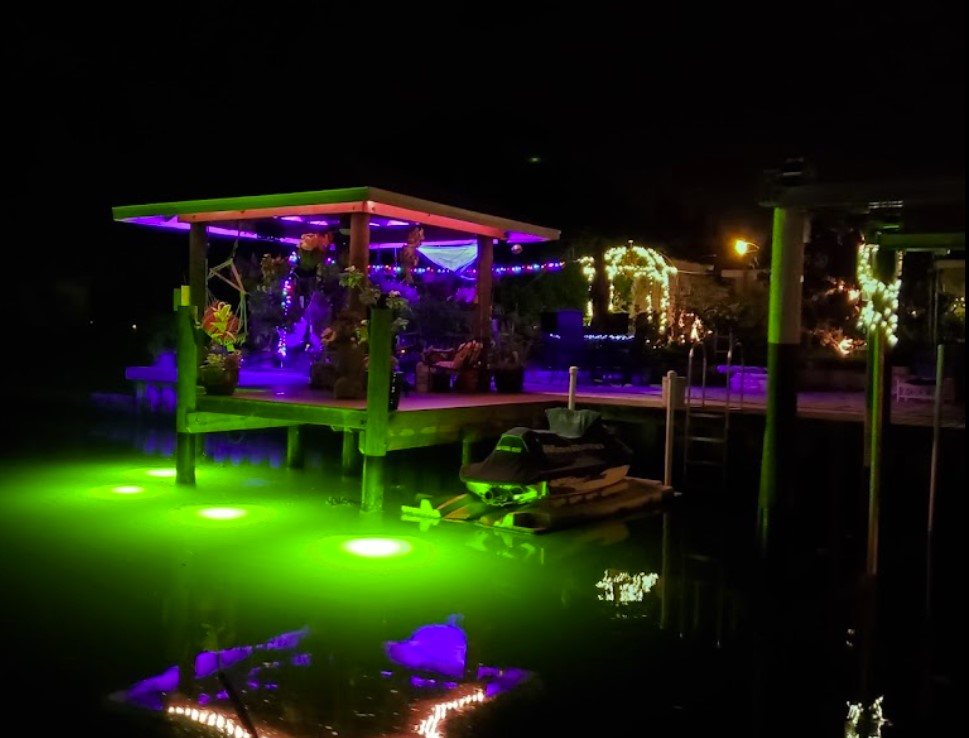
We’ve been building the World’s Best Underwater Fish Lights for almost two decades, so we know a thing or two about fish lights. So, in this post, we’ll cover EVERYTHING you need to know about fish lights. Whether you’re thinking about buying one, or you’ve had one for years, this is going to be a treasure trove of information. In this post we’ll cover:
Click On Any Topic Above To Scroll Straight To It!
How Do Fish Lights Work?
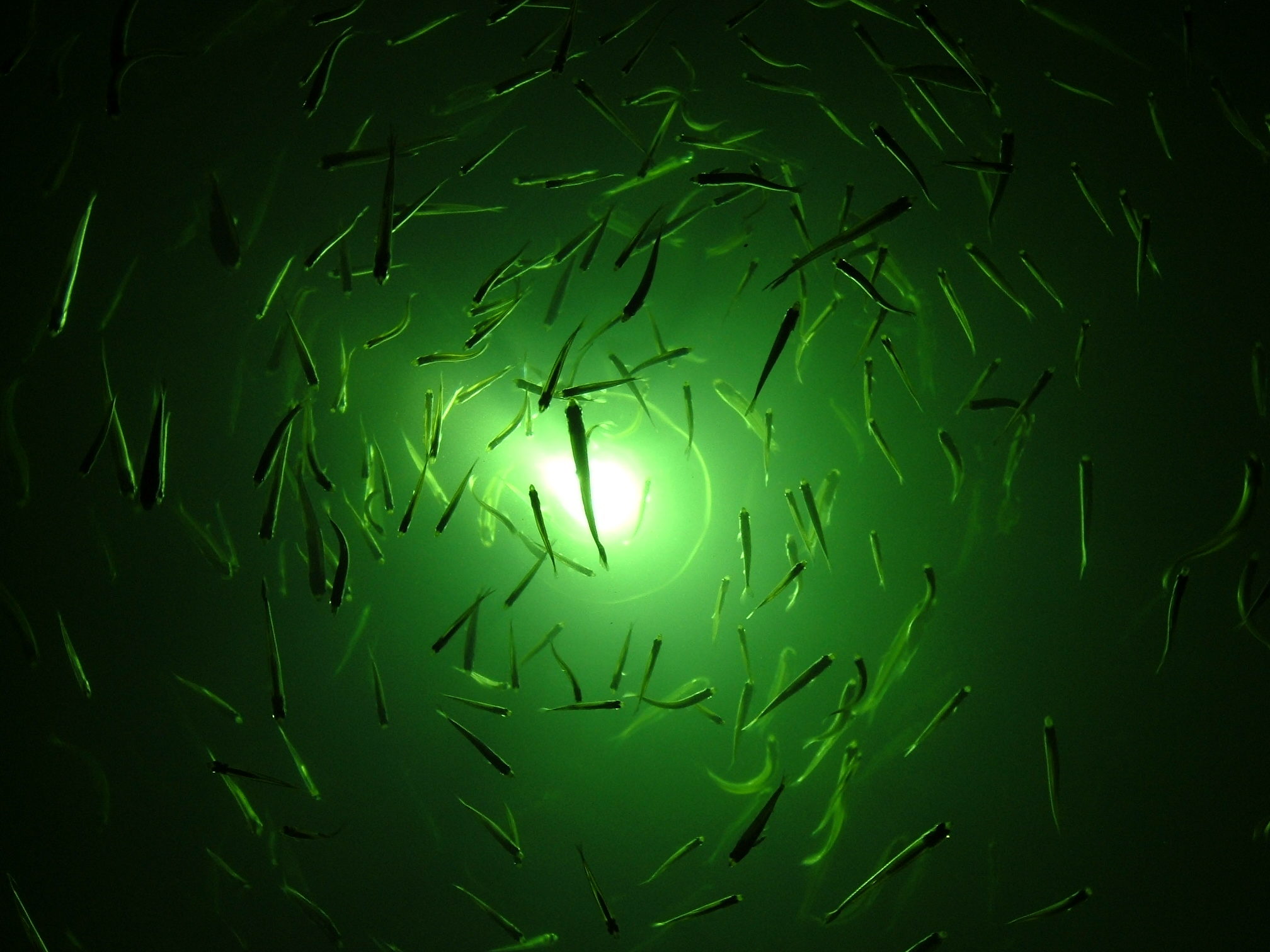
While these lights seem to magically attract fish to your dock, it is actually a simple, scientific process. Any light under the water, no matter what the color, will attract fish. When lights are placed under the water, they reflect off particles in the water. These tiny little particles enhance a natural food source for bait. These bait fish are then attracted to the light. Once the bait fish are attracted, they bring in bigger game fish like snook, tarpon, and bass.
Some lights attract marine life within minutes of installation, while others can take up to a few weeks. Activity and attendance depend on your location. Even though you might not have fish the first night, the process is still the same. It just takes a little longer for the little guys to find your light and become accustomed to the feeding cycle. Once the fish find the light, they will be back every night. Therefore, it is important for the fish light to run on a photocell. The photocell will ensure the light comes on every night, and off every morning. After a few weeks, you will have built a feeding cycle with the fish in your area and will see them coming back. It is similar to that of a dog. If you feed him every day at 5:15, he will be waiting for his food at 5:10.
As time goes on, you’ll start seeing much more activity in the light. Most of them will be bigger than the ones that preceded them. These lights do more than just attract fish, they create a natural aquarium in your backyard! The best part about these lights is that they do not harm the fish or any other marine life. They enhance a natural food source for the animals as well as provide countless hours of entertainment for anyone that sees them.
Which Color Fish Light Works Best?
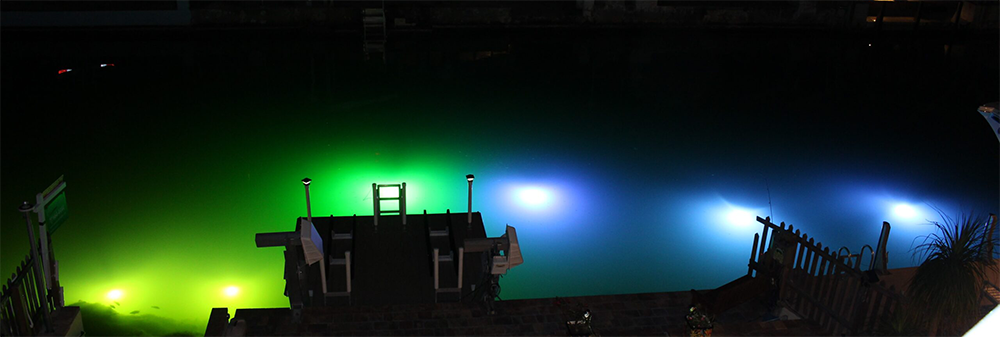
Here at Underwater Fish Light, we have four fish light options to choose from! We have our Classic Series, which is a 175-watt bulb. We also have the Extra Bright Series which is equipped with a 250-watt bulb. Our Extra Bright Series sports three different colors; Vibrant Green, Natural Green, and Caribbean Blue! It doesn’t matter which color you choose. Fish will be attracted to the lights no matter what!
Both Series work great, but choosing the color all depends on your water clarity. If you have murky water, your best choice would be to go with the Extra Bright Series. If your water is more clear, the Classic Series will work great!
Our Caribbean Blue fish light systems will only work in crystal clear water. If you are unsure if the Caribbean Blue is right for you, just give us a call at 941-391-5846 and we will be happy to help you!
How To Install An Underwater Fish Light
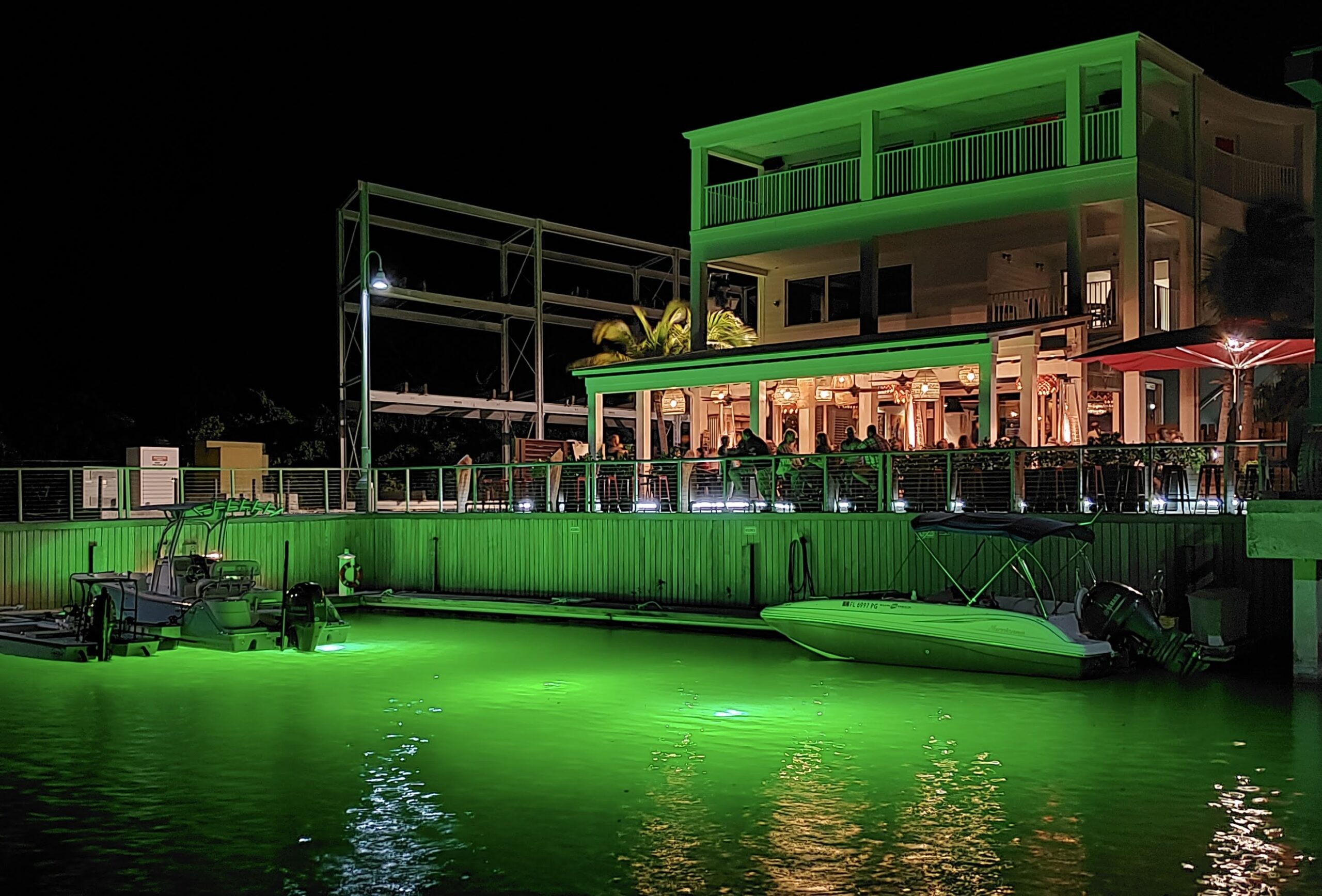
Installing your Underwater Fish Light is much easier than many people think. We design our lights for easy installation, so you can see fish as soon as possible! We want you to spend most of your time enjoying the fish, not trying to puzzle out how to put it together.
Prepare Your Dock For Underwater Dock Lights
In order to install these underwater dock lights, you’ll need to prep your dock first. You’ll need to make sure you have a grounded 110-outlet. All of our dock light systems are equipped with a GFCI plug that goes directly into a grounded 110-outlet. Next, you’ll need a post on your dock to mount your control box. This post will need to be within 10 feet of the grounded 110-outlet.
Depending on the size of the dock light you purchase and the size of your mounting post, you may want to get a Dock System Mounting Plaque. This plaque helps you mount your dock light control box securely to your dock post.
Start Installing Your New Underwater Dock Light
Now that your dock is set up correctly, you’re ready to start installing your fish light! Below is a step-by-step installation guide for your dock light system.
- Mount the Control box on post/pillar at least 4 to 6 feet above the waterline and within 10 feet from an APPROVED GFI OUTLET
- (Do Not over-tighten the screws used to mount the control box to the pillar/post).
- Note Mount the control box in a well-ventilated area.
- Once you determine where you would like to place the light, attach the weight with the zip ties, to the light cord a minimum of 3 inches from the base of the housing/bulb, and lower the weight into the water. The bulb unit will follow.
- BE SURE TO HANDLE IT WITH CARE!!!! DO NOT BANG/BUMP THE BULB!! Keep in mind, that the bulb must always be submerged underwater, and may never be lit out of the water.
- Attach the photocell to the top of the box, taking care to align the prongs
- The photocell attaches with a “twist-lock.” Simply align the prongs and twist the photocell on
- Plug the 10-foot power cord with the inline GFCI
- Once again, be sure your outlet is a GFCI-approved outlet
- Wait for the sun to set, and enjoy!
5 Best Techniques for Fishing Dock Lights
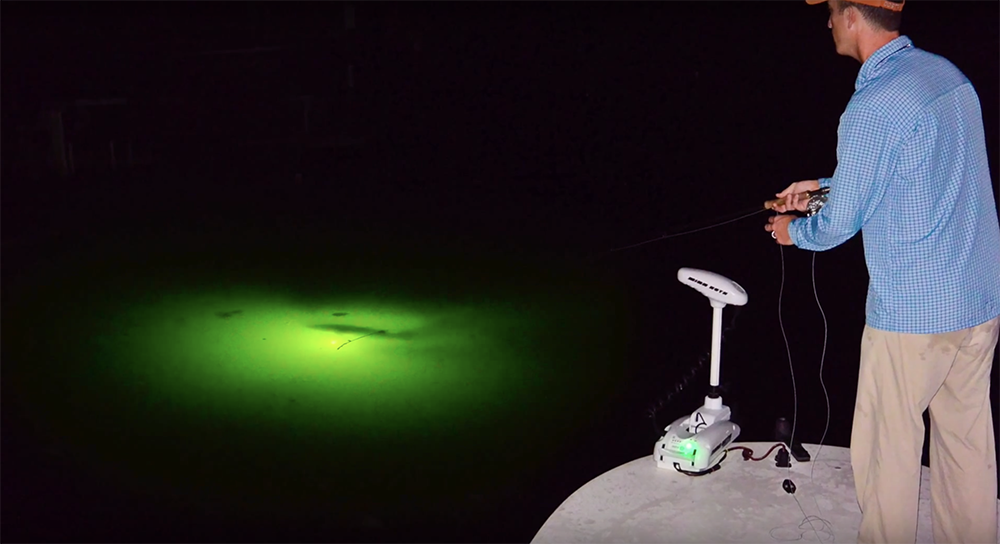
1. When it comes to bait and lures, choose wisely.
The key to fishing dock lights successfully is to match the bait or lure on your hook to the bait you see swimming around the light. The species will differ on your location, but more often than not, it will be tiny minnows. Sometimes, in high current areas, you’ll see some shrimp, but in most canal waterways, you’ll see small baitfish.
Anglers who love live bait don’t usually have any problems with this approach. Simply throw out a cast net or two and head out to the dock lights when you’ve got enough little baitfish to fill your bait bucket!
For those of you that are die-hard artificial lure fans, the DOA TerrorEyz lure is a great choice for fishing dock lights. Our favorite color variation is the Pearl color.
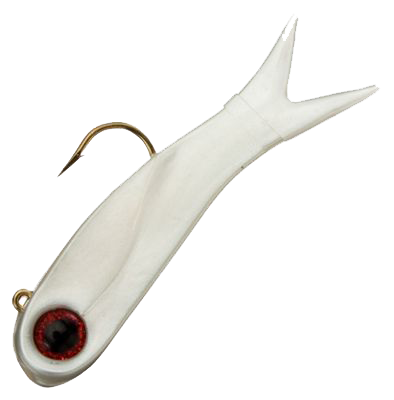
2. Wait and Watch
When you first pull up to a dock light, watch how the predator fish interact with the baitfish. Observe the patterns the baitfish swim in and how the predators interrupt those patterns for strikes. You don’t want to just start casting into the light with no plan. Learn what the real baitfish are doing, so you can go into a better plan regarding your casting and retrieving. By taking just a few minutes to monitor the situation, you’ll be able to learn how often the predators are striking (if at all), which baitfish they choose to strike, and how to recreate those moments yourself.
3. Monkey see, monkey do
After you’ve watched the marine behavior for a little while, try to mimic that behavior yourself with your lure or fly. By mimicking the look and behavior of the other baitfish as closely as possible, the predators will have a more difficult time telling the difference.
4. It’s all about the presentation
Most fly fishers know the importance of a natural presentation. You don’t want to throw your fly or heavy lure directly into the middle of the light. That will just scare everything away. Try to cast out into the shadows past the light, then retrieve your hook through the dock light while matching the baitfish swimming patterns.
5. Be aware of your surroundings
When you finally hook a fish around a dock light, it seems like their favorite thing to is go straight under the dock. It’s easy to get tangled and possibly lose your fish when this happens. So be ready to steer him out of the way right after the hook set! Don’t get discouraged if you lose a few. We’ve all fallen victim to a smart snook here and there. If you’re in a kayak or smaller vessel, try to anchor yourself at an angle where you can best steer the fish out towards the canal.
Fish Lights vs Murky Water: What You Need To Know
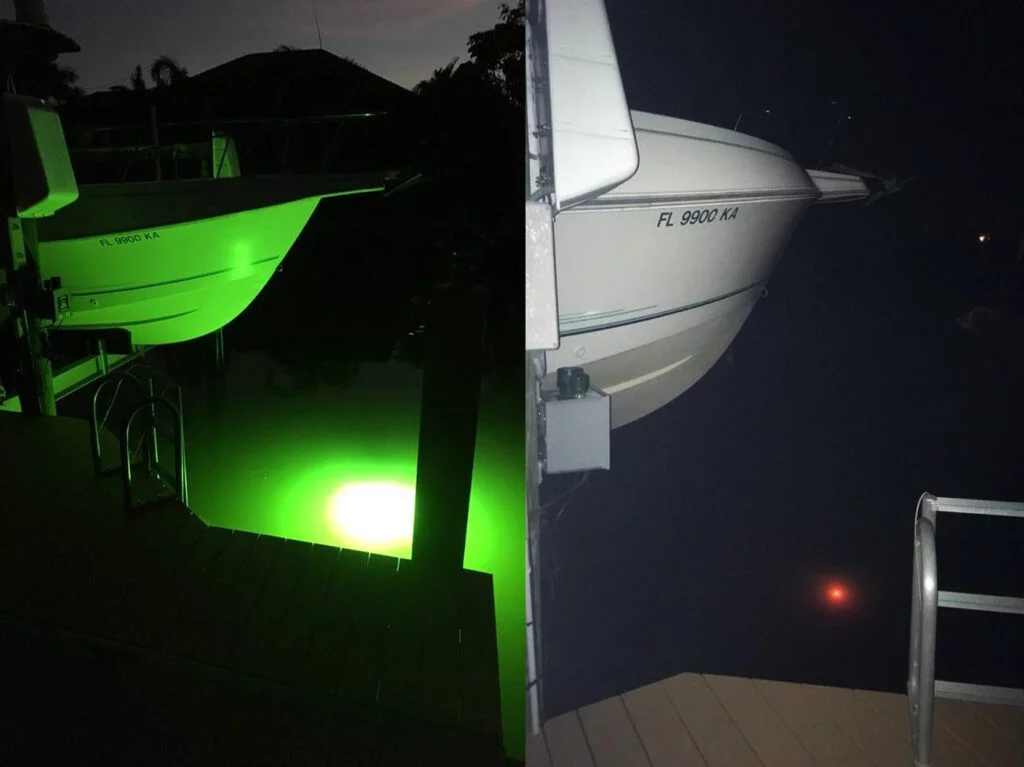
Have you noticed that your fish light might look a little dim? Well, there’s a reason for that. Throughout the year, the water in your canal or waterway can become murky. Murky water can be caused by many things. For our Southwest Florida residents, murky water in your canal could be caused by discharges from Lake Okeechobee. Discharges from Lake Okeechobee aren’t the only cause of murky water. For the rest of our customers around the globe, seasonal changes have been known to cause the water clarity to diminish a bit. There are many different seasonal changes that affect water clarity, but the most prominent one is heavy rainfall. Rainfall causes runoff from surrounding land into waterways, increasing the amount of sediment in the water. Also, during heavy rainfall and storm conditions, the water can move with a higher velocity than normal, stirring up the natural sediment at the bottom, and causing the water to get murkier.
Increased sediment in the water can cause the water to become murky, and blocks more of the light in the water, causing your fish light to look dim. The important thing to note is there is nothing WRONG with your fish light. The murky water is just keeping it from shining as bright as it normally does. One thing to remember about our fish lights is the bulb itself will never dim. On the very rare occasion of a defective bulb, the light is designed to turn off to indicate an issue. So, if you notice your light has gone dim, be sure to check the water clarity in your waterway.
Which Lights Are Best For Murky Water?
For customers interested in purchasing our 175W Classic Lights, the ideal water clarity is in between crystal clear and mid-clarity water. The bulbs on these systems are 175-watt bulbs that illuminate a clear/white color. This white color then reflects off the particles in the water, showing a green color on the surface. These small particles attract the baitfish in the area, which in turn attract the predator fish (snook, tarpon northern pike, etc.). The 175-Watt bulbs will give you about a 10-foot diameter circle of light on the surface of the water.
For some people, murky water is a year-round occurrence. For those customers, we suggest the 250W Light Systems, which are designed to cut through murky water. These lights have powerful 250-watt bulbs, which allow them to cut through murky water and be more successful for customers in rivers, lakes, bayous, and any other location that has dark water. These lights attract fish in the same way as the 175-watt systems. They still reflect off small particles in the water to attract the baitfish and predator fish. This light system will give a 15-foot diameter circle on average in waterways.




